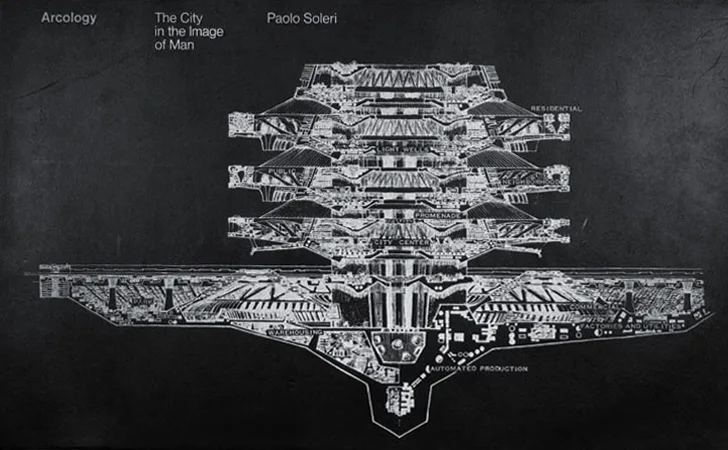
Just a Paragraph or Two
Feeling particularly generous

This issue is brought to you with the support of Skiff, privacy-first productivity suite. Unfortunately, Skiff was purchased by Notion and has been discontinued.
Hey friends 👋
I’ve decided to transition away from Substack. This is mostly because Elon has hobbled every form of integration between the two services, making it hard for me to get any value out of Substack. It’s also because I never really found an audience there (traffic to my Mirror page is more than 10x the traffic to my Substack) and because I absolutely hate their editing software.
The Substack editor doesn’t allow for markdown support and struggles to correctly format anything I copy and paste into it. Not only that, but it is also not particularly flexible, and I don’t use the pay features that would make it valuable; which would also lock me in. For that reason, I will be replacing Substack with Paragraph, a sort of web 2.5 solution, which, unlike Mirror, allows people to import subscribers, which was necessary for porting my audience from Substack. With that said, Mirror will remain the official home of both my blog and newsletter.
Remembering that being able to port an audience from one platform to another is one of the key benefits of email newsletters, and the focus of the first issue of my newsletter, I hope you don’t mind this shift. I’ve worked hard to limit its effect on the user experience, but please let me know if you have any feedback about the change.
With that, let’s get into it!
It takes money…
In the last newsletter, I couldn’t help but gush about a new toy that had just come in the mail: a mechanical keyboard. What can I say? When you write several thousand words per week, these are the things that get you excited. But it’s not just that satisfying thock of each key that has me giddy. It’s the feeling that I’m investing in this project.
Soon after I got the keyboard, I realized I would need to make another purchase I’d been putting off for some time. I needed to buy a Ledger. I’ve always known that a hardware wallet would be a good investment, but I kept kicking the can down the road because I tend not to keep many high-value assets in my wallet.
However, when I recently read a tweet from MyEtherWallet founder Taylor Monahan about hot wallets being mysteriously drained, I decided it was time to take security seriously.
As I said, I don’t store a considerable value of crypto in my wallet. I have a fair bit of personal and student debt still, and with interest rates going up, I realized a while back that I should shift away from volatile investing towards paying off more of that. I didn’t shift away 100%, and I still hold some asymmetric bets like NFTs and meme coins, but I have prioritized, if you will.
As always, nothing in this newsletter is financial advice. Everyone has their own unique set of needs, so you do you.
Even though I don’t have much money, there are some things in my wallet that I really wouldn’t want to lose; namely, my digital identity.
Thumbs Up is more than a newsletter and a blog, it’s an onchain identity. My wallet addresses are publicly viewable information, which is why I never send crypto to friends or family (more on why we need crypto privacy, here). Furthermore, my ENS domain is like a username for all of web3 and it, as well as my Lens profile, are NFTs held in my wallet. Even my ability to edit my blog on Mirror or view my email on Skiff requires access to the wallet associated with the account.
This is good, by the way. This method of authentication is more secure than just about any other, ever imagined, with one caveat: you must protect your private keys at all costs. So now, with this mysterious new exploit out in the world, I knew I could be doing more to secure these assets.
A Better Way to Wallet
If one wants to level up their self-custody game, there are two options to be aware of.
1. Smart Contract Wallets
On Ethereum, there are two kinds of accounts you can generate. One is called an externally owned account (EOA) and is the kind of account you’re familiar with. Whether you use a hardware wallet like a Ledger or a software wallet like Exodus, you are still using an EOA, which means you are the only entity responsible for the private keys.
The second kind of account is known as a smart contract account, often referred to as a smart contract wallet. These wallets do not operate via a private key, but rather a set of logic coded into a smart contract on Ethereum. They can allow for all kinds of familiar behaviours like signing in with an email, account recovery, multiple co-signers on transactions, and even daily limits to prevent hackers from draining your account.
The downside of smart contract wallets is that transactions tend to be a lot pricier. During the height of gas costs in 2021, when sending ETH could cost $10 or more, I tried using a smart contract wallet called Dharma and every transaction was nearly 5 times as expensive.
EIP-1559 coupled with the movement of a lot of traffic to L2s, has brought down costs, but I’m still not sure if I’d choose a smart contract wallet for Layer1 tasks yet. But if you’re dealing with transactions in the tens of thousands, it’s definitely something you should consider.
2. Hardware Wallets
You’ve probably heard the names Ledger, Trezor, perhaps others like Coolwallet or even the Grid+ Lattice1. Hardware wallets like this generate private keys offline and, crucially, never share those keys. When interacting with smart contracts, these wallets receive an intent (basically the details of a transaction to be signed), they add a cryptographic signature, and push the signed intent back out to the blockchain to be validated.
Hardware wallets also act as a kind of 2-factor authentication (2FA) device, requiring physically handling the device to approve signatures. This can be good for security, though it can be a little burdensome for daily use.
Note: One misconception about hardware wallets is that they are protected from smart contract exploits. Sadly, this is not true. Any EOA wallet that has interacted with a flawed smart contract is at risk of an exploit to that contract's code, so make sure you use transaction simulation software like Fire, Rabby, Pocket Universe, or Coinbase Wallet to see that what you’re signing is safe. It’s also best practice to set limits on how much of a given token a contract can spend, and to revoke access to dApps you’re not using actively or which have known exploits. You can use revoke.cash to do this.
I decided to go with a hardware wallet, choosing the Ledger Nano X. This wallet is unique in that it features bluetooth for pairing with mobile wallet apps like their Ledger Live app, and two of my favourites: Zerion and Rainbow.

Moreover, I also selected the Nano X because it comes in this cool translucent purple colour.
I did several posts on twitter and Farcaster about how the colour reminds me of so much of the tech of my childhood, like my purple N64 or the grape iMac G3 I used in my high-school media class.
If you want to get one for yourself, you can pick them up from Ledger directly or on Amazon. Just make sure to inspect them for tampering. In any case, during setup, Ledger Live verifies that the device has not been previously initiated, which they’ve stated is sufficient to prevent the risk of malicious intrusion.
I got mine all set up and have begun transferring my assets to it. And I’ll be keeping it as a cold wallet, meaning one which doesn’t interact with smart contracts. There is something, which I’m still not much of an expert on, called counterfactual delegation that allows a wallet holder to delegate their signing rights to another wallet without sharing the ability to transfer tokens. This means that an NFT holder could claim airdrops, for example, using a “burner wallet” without risking the contents of their hardware wallet.
I’m hoping it also means I can store my Lens profiles in my hardware wallet, while using a hot wallet to connect to services as those profiles, though this will require the Lens team to integrate the framework. I’m hopeful they will.
With the future of social media looking like it will involve self-custody in some form, these are the kinds of things that I’m thinking about more and more.
Did Someone Say Social Networks?

Last issue, I gave away 5 invites to Bluesky, the twitter competitor that was funded by Jack Dorsey while he was still the CEO of twitter. Confused? So are a lot of people. It’s not well understood that Bluesky is actually not a social media platform. It is a public benefit corporation (PBLLC) working on the AT Protocol, a portable social “account” that leverages a decentralized identifier (DID), a domain namespace, and some technology borrowed from IPFS. Despite that connection, it does not incorporate blockchain, nor does it make use of the ActivityPub protocol which underlies Tumblr, Mastodon, and numerous other portable social platforms.
Bluesky is weirdly controversial. This is seemingly due to its rapid growth in popularity and the fact that there isn’t much in the way of client diversity yet, so people tend to think that the official Bluesky app is the whole platform, and that it's just a twitter clone. The broader public doesn’t have a great frame of reference for open-source protocols, as even email to most people is understood to be Outlook or gmail, rather than SMTP/POP/IMAP protocols + a server.
Understanding decentralized social networking requires understanding the difference between platforms and protocols. Inherently, web3 natives are better at grasping this than mainstream (web2) users. The composability of DeFi’s money legos, the ability to sign in with Ethereum, the way you can import your private keys into another wallet; these are features of an open design framework.
Because of this intuitiveness, protocols like Lens, Nostr, and Farcaster are natural fits for crypto users. It’s why so many of us have gravitated towards them. I recently joined Farcaster and aside from a little ridiculous bluesky vs purplesky tribalism, it’s been pretty great so far. I’ve had great back and forth interactions with users from surprisingly diverse backgrounds and perspectives, and everything has been reasonably cordial and inviting.
Speaking of inviting…
Goodie Bag

EDIT: This section previously recommended Skiff Privacy’s suit of productivity tools and included a giveaway of free accounts. However after they were purchased by Notion, I can no longer recommend them. If you’re looking for similar products, I recommend Proton which I use personally.
This section also included free invites to Farcaster network. All the invites were given out and anyone who used them probably would have qualified for the Farcaster O.G. NFT that ended up selling for wild prices, at times north of $10k
Farcaster is now permissionless and so invites are not necessary. You can sign up here.
Q & A
If you like my content, you can become a patron on Hypersub and unlock a number of perks ⬇️
This question comes from one holder who DMed me to ask a question that I bet a lot of you are wondering lately: what’s the deal with shitcoins?
...well, they phrased it a little more eloquently than that
Let’s have a look!
I’m curious if you have any thoughts on the shelf life of meme coins like Pepe? Will they stick around like doge or be a flash in the pan?
I love this!
Let me start by saying, I think there’s two questions here. One is, “will this current set of memecoins stick around, or be quickly replaced by something new?” and the other is, “can memecoins hold value?”
I’ll start by saying that I think the majority of memecoins are extremely short-lived, opportunistic Ponzi schemes that follow a very predictable cycle. Up up up, down down down, and then maybe they repeat this a few more times.

The reason most meme coins go up is simple. Some folks gather big bags of the coins, and they whip the market into a frenzy to dump on later investors. There are telegram and signal groups dedicated to this kind of intentional market manipulation, and discord channels too.
That said, every once in a while, a coin comes along that, regardless of whether the above applies, it still finds value in the market. This kind of irrational valuation can happen with stocks, beanie babies, etc but hits different with crypto for a few reasons.
1. There are almost no barriers to buying crypto; certainly nothing compared to buying and selling stocks, which have age and region restrictions, trading hours, and serious legal penalties for market manipulation.
2. Market Cap = Price x Circulating Supply
Remember this formula always. Especially the last part because it's one way retail investors get fooled into believing tokens are more valuable than they are.
See if I invent a token with the word doge in it, with 100 trillion circulating supply, and the market assumes that this new doge token is worth something comparable to an existing doge token like SHIB, whose current value is around $0.00001, then that token would immediately have a market cap of $1,000,000,000.
PEPE goes way further than the above example, having launched with a circulating supply of 420,690,000,000,000. It is thus more likely to remain a mania than to become a currency, from a purely objective standpoint.
With that said, the tokens that have endured the longest are the ones with a clear meme to attach to, like Dogecoin and later Shiba Inu—in effect, the popularity of SHIB comes from it being the first successful doge-flavoured coin on Ethereum. Now, one of the internets most-memed characters of all, Pepe, is the namesake of a token. Needless to say, I could imagine the mania continuing for some time. And maybe, just maybe the memetic value is enough for it to become a currency.
Would I invest? Well, keeping in mind that this is not financial advice but just my opinion: if a person has the money to spare without hurting their financial situation, they should feel free to gamble. That’s all this is. I’d personally say that you’re more likely to come out with some money leftover if you gamble $100 on PEPE than you are if you gamble $100 on the lottery. But if a person wouldn't do the latter, then I wouldn’t think they should do the former.
With that longwinded answer, we’re over 2500 words, so let’s wrap things up the same way we always do.
Recommendations
I somehow made it to the end of the newsletter without talking about PoolTogether. That won’t do! I guess I’ll have to do some recommendations related to my favourite DeFi protocol and their wonderful community.
My first recommendation is actually a book! We’ve just come to the end of the first season of ReadTogether, the PoolTogether community book club. This time around, we read Laura Shin’s drama-rich tell-all of Ethereum’s founding, The Cryptopians: Idealism, Greed, Lies, and the Making of the First Big Cryptocurrency Craze.

It’s absolutely wild and a great read, which you can find links to purchase in every imaginable format, here.
Up next is my newest article. This one is about the next iteration of the PoolTogether protocol, aka v5, aka the hyperstructure.
When I was researching for the article above, I discovered that the visionary architect who conceived of hyperstructures, Paolo Soleri’s greatest works could be read for free online at a site called The Library of Consciousness. Not only can Soleri’s works be found there, but so, too, can the works of big thinkers like Alan Turing, Martin Luther King Junior, and Aldous Huxley, among others. Here is the specific book I reference in my post.
It’s worth noting that while Paolo Soleri’s architectural vision speaks for itself, it would be remiss to ignore his contentious personal legacy, having been credibly accused of assault. I do not ascribe to the belief that appreciating his concepts and writing is in any way an endorsement of his actions, but if you disagree, you may want to avoid those works. I'll add the official statement from Arcosanti.org, the foundation who stewards his architectural legacy for posterity.
Finally, in the section on social networks, I mentioned ActivityPub, the open protocol that’s being adopted by some of tech’s biggest players, from Tumblr to Medium, and, of course, Mastadon. Whether you use any of these services, it’s worth learning about, nonetheless. After all, if you stuck around this long, it’s because you like to learn.
So, here is an interview from the Vergecast with Flipboard’s CEO Mike McCue discussing, what else? Decentralized social networking.
And with that, I say we call it a day.
Until next time,
Thumbs Up
If you enjoyed this newsletter, consider collecting a copy. It's like tipping and receiving a unique digital collectible as a receipt.
If you want to become monthly supporting patron and unlock special perks, check out my Hypersub
And for the cypherpunks, I accept anonymous tips with Zcash to my shielded address:







 6,118
6,118








